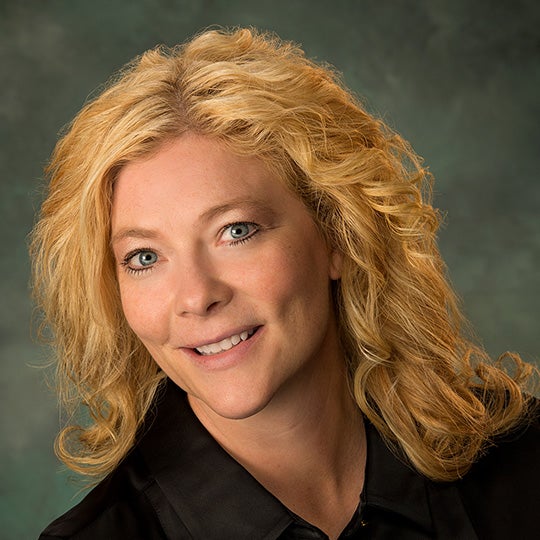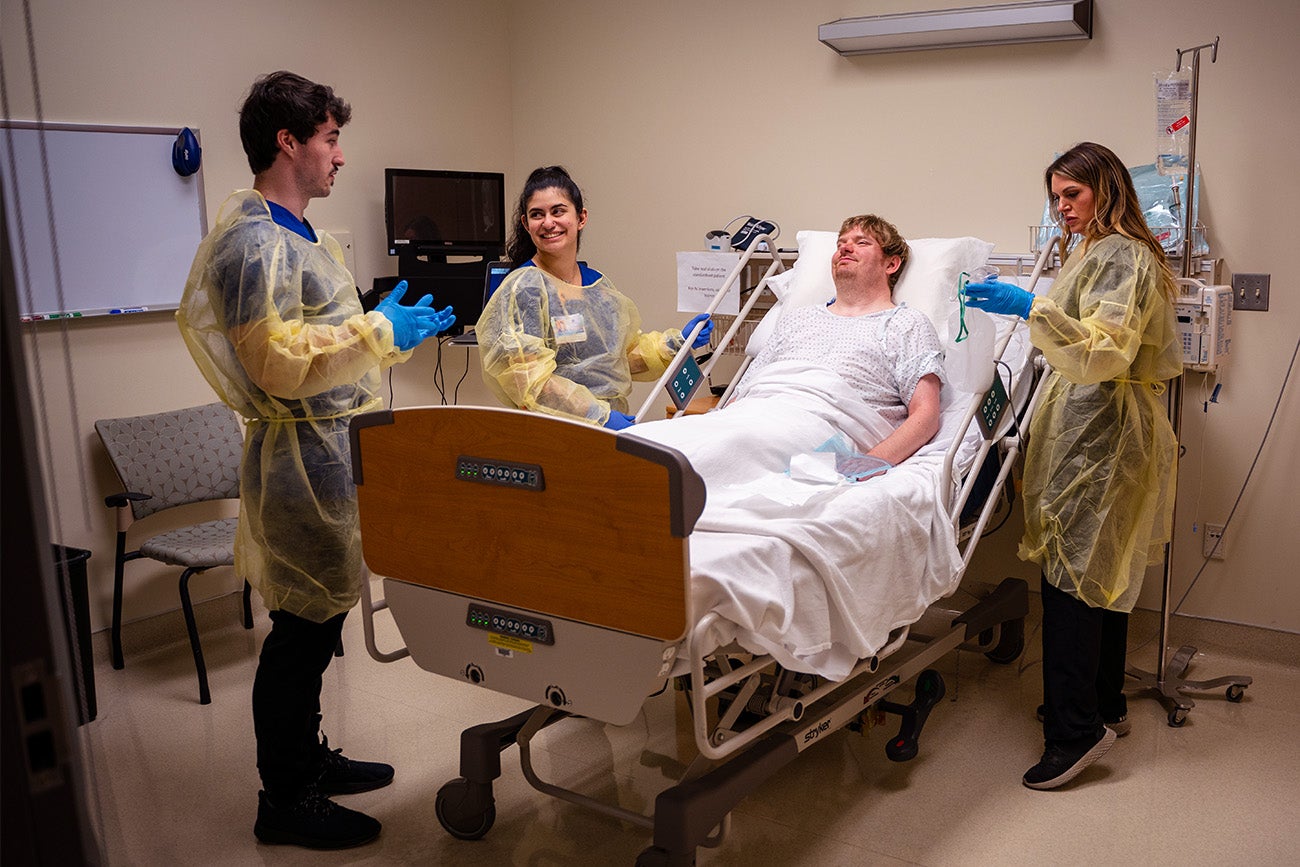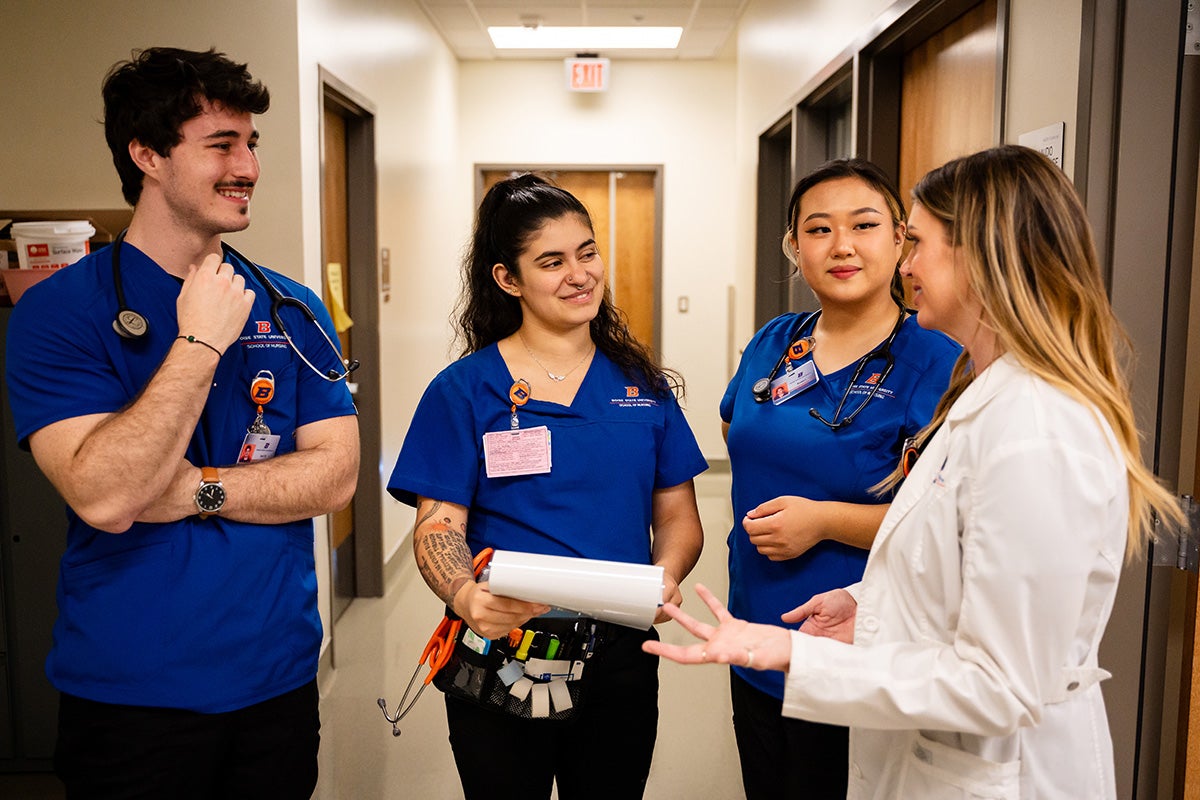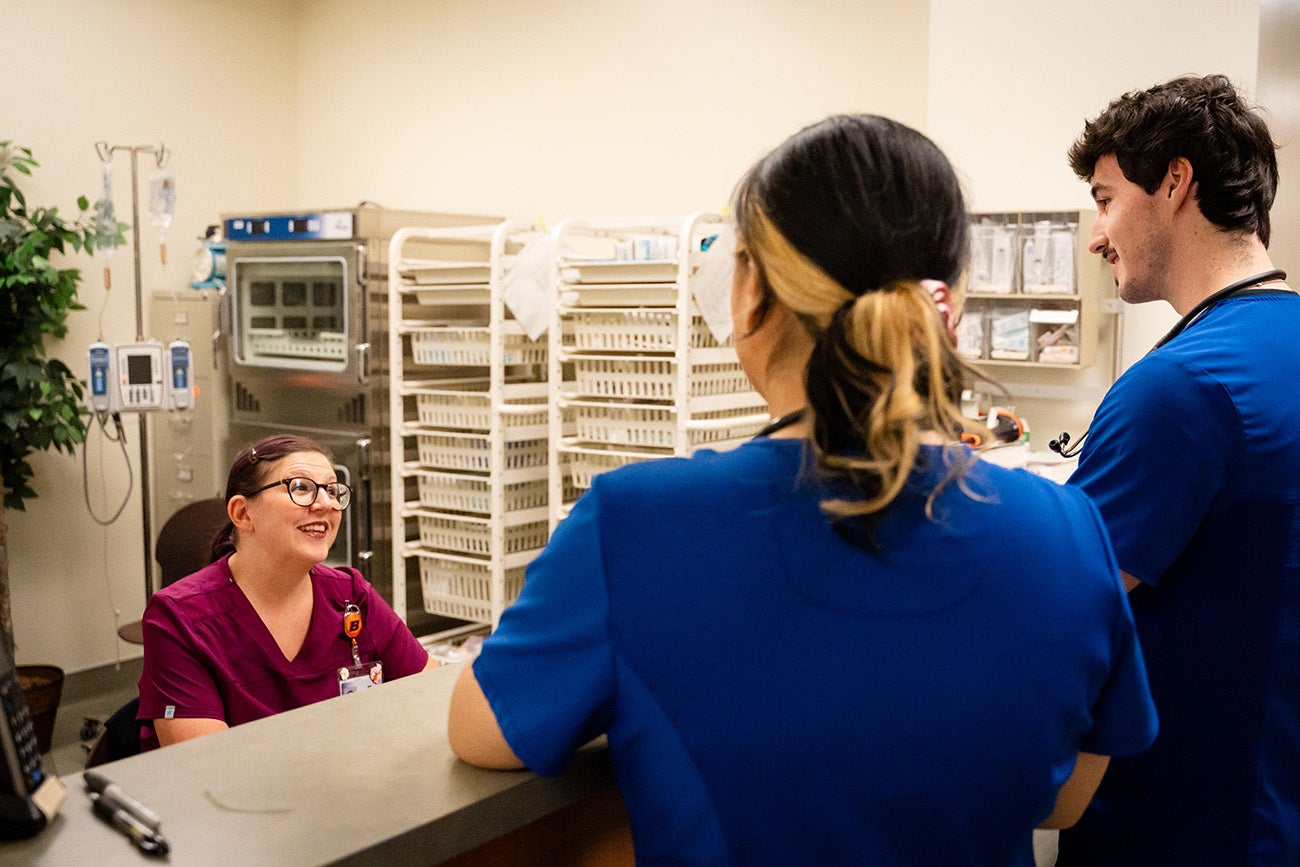St. Luke’s Nampa breaks a new path with the School of Nursing
Thanks to the ingenuity of a Bronco nurse alum Misty Robertson, the School of Nursing has increased its clinical offerings through a brand new clinical model.
“I’m aware of the concerns around expanding our workforce and being able to increase our number of nursing students’ clinical experiences,” Robertson said.
Robertson is the Chief Operating Officer and Chief Nursing Officer of St. Luke’s Nampa Medical Center and Fruitland Medical Plaza. She knows firsthand that the size of healthcare facilities can limit the number of students able to complete clinicals there.

St. Luke’s Nampa is an 87-bed acute care hospital, “so having enough clinical space is always a challenge just because our units are smaller and we don’t have as many nurses to serve as preceptors for the students,” Robertson explained.
Determined to meet the needs of the school and increase capacity for students, Robertson got innovative.
She proposed expanding students into departments that are non-typical placements where they would still effectively learn the essentials of nursing.
“Misty worked diligently with Boise State to discuss ways that we could meet our student learning outcomes while considering new clinical placements,” said Shelle Poole, divisional dean of the School of Nursing. “It is leaders like Misty that equip us to continue to meet the growing demand for a highly-educated and a workforce-ready nurse. Innovative partnerships like these enable nursing education in Idaho and for all of us to reimagine how we conduct clinical education.”
How does it work?
Medical surgical classes are where students learn the basics of nursing care, Robertson explained, so they had to get the most innovative in determining units that would meet these requirements.
The medical surgical unit only has 24 beds, so students in medical-surgical classes now have opportunities to rotate through alternative units that still give them practice with med-surg concepts.

For example, “if they’re in ER [emergency room], they might be working on assessments or how to place an IV, which are all basic skills that they need, but they’re also getting exposure to a specialty area of nursing,” said Robertson.
Students may find themselves in the emergency department, medical imaging, pre- or post-operation, where they would see a lot of procedures. Students also have the chance to rotate with the crisis nurse, in the telemetry unit or intensive care unit.
“We worked really closely with the School of Nursing to make sure that those non-typical areas would meet the requirements of the program,” Robertson said. With years of nursing experience, she knows “med-surg skills really happen everywhere,” so she proposed the new placements for Bronco nurse students.
Turns out, her idea was a win-win.
Benefits both ways
This unique model may be a new concept, but it didn’t take long to see its many benefits. One of the most obvious is that “it allowed us to double our number of students,” Robertson said.
It also exposes students to a wide range of future jobs. New nurses often aren’t sure where they want to work, and have limited practice time outside of traditional bedside hospital care.

“You’re not always sure where you might want to work,” Robertson said. “[The field of nursing is] so broad, so they get exposure to those areas and can decide if that might be the place for them.”
Another benefit is the redistribution of students across the entire facility. This lightens the workload for full-time nurses while simultaneously widening students’ perspectives of potential career paths. They get a feel for the culture of the entire facility.
“This also benefits the hospitals because we’re allowing nursing students to see these different areas of nursing that can often be difficult to attract to,” Robertson said. Exposing students to lesser-known units can aid in their recruitment and hiring process, thus reducing shortages.
“So I think the message is that…it’s really very beneficial to both of us.”
Lessons learned for the future
One of Robertson’s big takeaways is the development process. Between coordinating with faculty and students’ availability, “there’s quite a long runway to make a change like this,” she said. “The planning and timelines in the academic calendar are much different than what I experience in the acute care hospital.”

Developing the model took about a year, first launching in fall 2023. But it was all worth it.
“Our first wave was very successful,” Robertson said. Students sent thank you notes back to the facility, and Robertson said it was reassuring to hear from the students that they enjoyed their time and learned what they needed to. “It’s been amazing.”
A double-Bronco herself, Robertson first earned her associates in nursing from Boise State and later returned for her doctor of nursing practice. She’s thrilled about the School of Nursing’s strong community partnerships and out-of-the-box thinking.
“After the strain of the pandemic…our staff needed more support from the school and they were really amazing in adapting their model to meet our needs,” she said.
“We worked together to really innovate and create something that would work here,” Robertson said.
Misty Robertson
A successful partnership and ground-breaking achievement
To understand the significance of this new model, it’s helpful to know some background of nursing education. Students need a certain number of hours practicing under instructors in the clinical setting, that is, not in the classroom. But, thanks to a host of factors – the shortage of working nurses and nurse educators, to name two – finding clinical placements for students is not easy.
In addition, solving the clinical placement problem ends up being one small piece in the large puzzle of solving the nursing shortage. The more clinical placements that are available, the more students a school can educate. The more students a school trains, the more graduates go on to join the workforce.
“We want to ensure that there are clinical placements for all of the students in order for the programs to be able to grow and meet our workforce demands,” Robertson said. “So certainly, we’ve been kind of wanting to brag about this model and make sure that others know that they could do it, too.”
To those considering new clinical models, Robertson recommends “being adaptable and open minded about looking at different areas of nursing,” she said. “You can still meet those curriculum needs, just in different areas.”